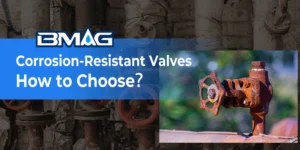İçindekiler
DeğiştirWhat is One-Piece Ball Valve?
Tek parçalı küresel vana basit bir, tek parça metal veya plastikten yapılmış kompakt valf. İçeri, there’s a ball with a hole through it that turns to control fluid flow. These valves are popular in residential applications, such as household plumbing systems and they’re cost-effective.

Technical Specifications
Size Range and Pressure Ratings:
Temperature Ratings:
- PVC: 32°F to 140°F
- Pirinç: -4°F to 366°F
- Paslanmaz çelik: -20°F to 450°F
- Karbon Çelik: 0° F ila 400 ° F

Materials and Their Applications:
- Pirinç
- En iyisi: su, air, mild chemicals
- Maliyet: $$
- Dayanıklılık: Good
- Korozyon direnci: Moderate
- Paslanmaz çelik
- En iyisi: Food, pharmaceuticals, corrosive fluids
- Maliyet: $$$
- Dayanıklılık: Harika
- Korozyon direnci: Harika
- PVC
- En iyisi: su, chemicals, low-pressure systems
- Maliyet: $
- Dayanıklılık: Fair
- Korozyon direnci: Harika
Uygulamalar & Industries
Water Systems:
- Residential plumbing
- Municipal water treatment
- Water filtration
Industrial Uses:
- Sıkıştırılmış hava hatları
- Basic chemical processing
- Soğutma Sistemleri
- Basic process control
Comparison with Two-Piece Ball Valves
One-Piece vs. Two-Piece Ball Valves:
Structure Differences
One-piece ball valves have a single solid body that contains all components. The body is cast or forged as one unit, with the ball, stem, and seats assembled through the end. Two-piece ball valves, on the other hand, split into two parts.
Cost Comparison
One-piece valves are generally 30-40% cheaper than two-piece versions. Bu fiyat farkı, daha basit üretim süreçlerinden ve daha az parçadan gelir. Fakat, when considering long-term costs, two-piece valves might save money since they can be repaired rather than replaced.
Installation and Handling
One-piece valves are lighter and more compact, making them easier to install in tight spaces. Since there are fewer joints, they’re also less likely to leak. Two-piece valves are slightly bulkier.

Selection Guide
How to Choose the Right 1-Piece Ball Valve:
- Determine Your Requirements:
- Pipe size
- İşletme baskısı
- Sıcaklık aralığı
- Akışkan tipi
- Flow requirements
- Uzay Kısıtlamaları
- Consider These Factors:
- Material compatibility
- Pressure rating
- Temperature limits
- Cost constraints
- Installation method
- Local regulations
Installation & Maintenance
Kurulum adımları:
- Clean pipe ends
- Apply thread sealant (if threaded)
- Align valve with flow direction arrow
- Tighten connections properly
- Sızıntıları test edin
Best Practices:
- Don’t over-tighten
- Use appropriate tools
- Follow torque specifications
- Maintain clearance for the handle
- Support pipe properly
Factors Affecting Cost:
- Material quality
- Brand reputation
- Certification requirements
- Order quantity
- Market conditions
Market Trends
Current Developments:
- Smart valve integration
- Eco-friendly materials
- Enhanced durability
- Better sealing technology
- Automated monitoring
Future Outlook:
- Growing demand in residential sector
- Increased focus on water conservation
- Rise in smart home applications
- Stricter quality standards
- New material technologies
SSS
Q: How long do one-piece ball valves last?
A: Tipik olarak 5-10 years with normal use.
Q: Can they be repaired?
A: HAYIR, they’re designed to be replaced when worn.
Q: What’s the main advantage over other valve types?
A: Simplicity, reliability, ve maliyet etkinliği.
Q: How often should they be operated?
A: At least once every 3-6 months to prevent sticking.
Q: Can they be used for steam?
A: Not recommended – use multi-piece valves instead.







